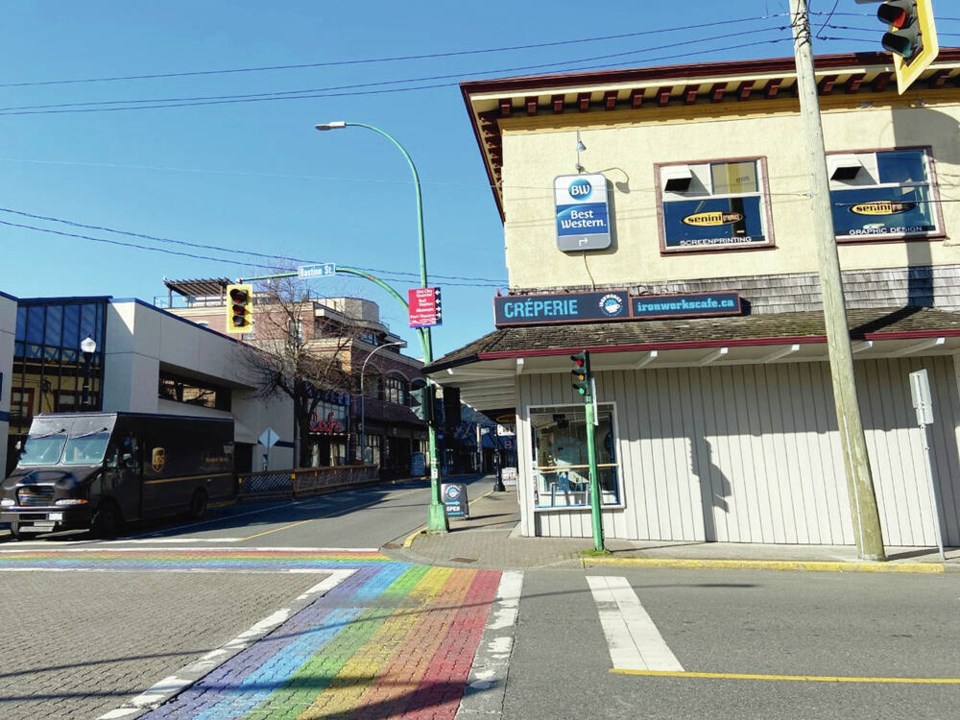Nanaimo council members have unanimously endorsed a new city-led and city-funded approach to tackle persistent downtown problems by improving safety in the core and reducing social disorder.
Subject to final approval by council, the Downtown Nanaimo Safety Action Plan will be introduced this year and cost $2.5 million annually once fully implemented. It would see a 0.9 per cent tax increase in 2022 and a one per cent increase the following year.
The program, developed by consultant Neilson Strategies, will see a dozen community safety officers (CSOs) hired as permanent city staff to work in a tiered system of teams in uniforms tasked with being proactive and making downtown more welcoming.
There is a sense of urgency that something needs to be done, Allan Neilson told the city’s finance and audit committee on Wednesday.
Measures must be “pragmatic and tangible and they must be focused on addressing the highest-risk, most serious and most visible issues in the city centre,” he said.
The program aims to address immediate safety and security needs for businesses, neighbourhoods, visitors and people who are unhoused, he said.
It does not try to tackle the root causes of issues such as poverty, he said. Other bodies, such as the province, are looking at those matters.
With authority similar to a bylaw officer, CSOs would interact with members of vulnerable populations in a compassionate way. They would be on foot or on bikes and would help people access social services and could walk with them to those resources.
A CSO may help someone get a meal or warm clothing. “They will work with that person to try to resolve conflict,” Neilson said.
CSOs would patrol daily, including late at night and into the early mornings.
If a serious incident arose, they would contact RCMP.
The program also envisions a downtown ambassador program staffed by volunteers. These could be Vancouver Island University criminology students on practicums. They would interact with businesses, vulnerable people and be trained in administering naloxone, used to reverse an opioid overdose.
Ambassadors would have a visible presence downtown. Tasks could include helping visitors find a place to park or go for lunch, and watch out for new graffiti and garbage which needs to be cleaned up.
A pilot clean team would be made permanent and a second team would be hired on a permanent basis. Cleaning work would be bolstered in public spaces. A vandalism relief grant is planned. Parks ambassadors would be introduced this year
All teams would be supplied with cellphones and radios for quick communication with each other and to provide for rapid responses.
A downtown safety co-ordinator’s position would be created at city hall. This person would work with an inter-departmental team as well as with another group made up of social agencies and other bodies.
Nanaimo may need to update its bylaws and look at partnering with local business associations on some programs, the committee heard.
Coun. Sheryl Armstrong noted that many similar functions had been in place in Nanaimo previously but were discontinued. She wondered how momentum would be maintained. Neilson noted that those services were provided by other agencies and the city did not have complete control over them. This suite of initiatives would be largely funded by the municipality.
Coun. Tyler Brown supported the program saying, “It is a huge step forward.” Coun. Erin Hemmens hopes it will change the dynamic of downtown and improve the social well being of the city.
Mayor Leonard Krog said the city is dealing with downtown issues after 30 to 40 years of failed social policies, leaving parts of the city looking like the Downtown Eastside in Vancouver. This “has now become the sad norm … in virtually every community in the province of British Columbia and indeed across this country. … It is a national embarrassment.”
Krog said he could not imagine waking up with serious mental health and serious addiction issues and brain injuries which makes every day a misery. “So we have to start back at that.”
The real issues need to be dealt with by a healthcare system that isn’t working for the vulnerable, he said.
Although downtown problems are the most talked about subject the municipality has the least ability and essentially no jurisdiction to really solve the issue and no real ability to ameliorate the distress, misery, damage and horror on the city’s streets, Krog said.
Adopting the downtown program will at least send a message that the city is stepping up to do its part, he said.



